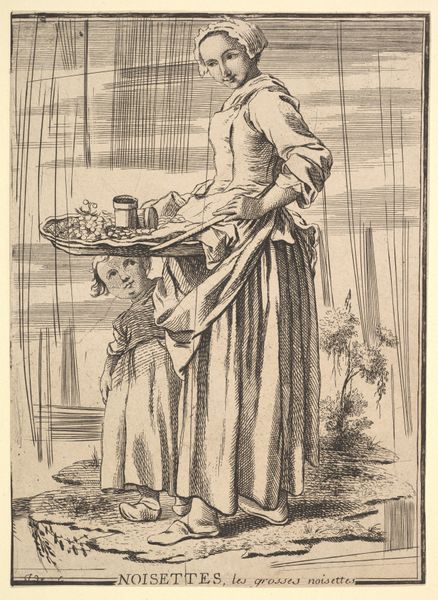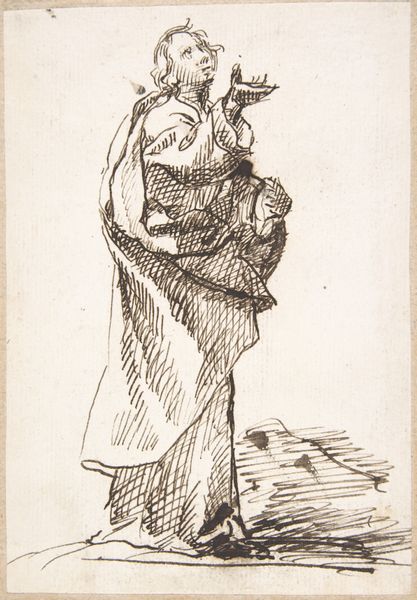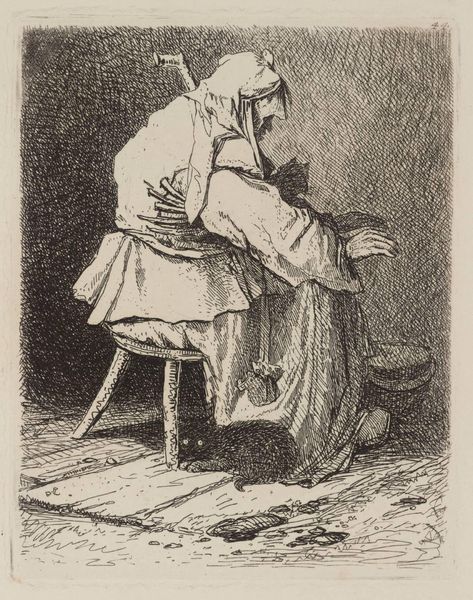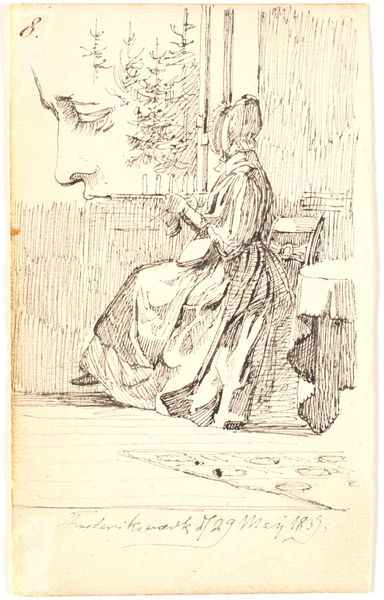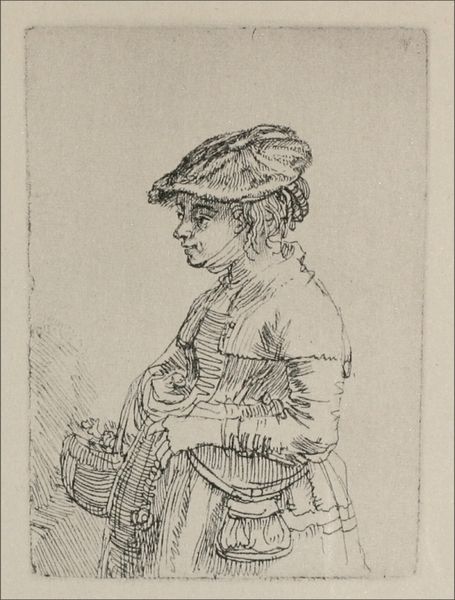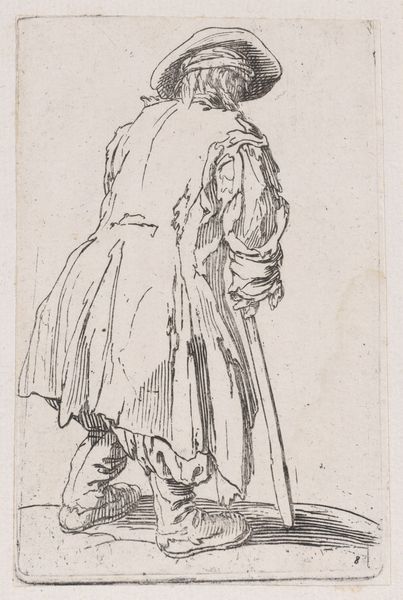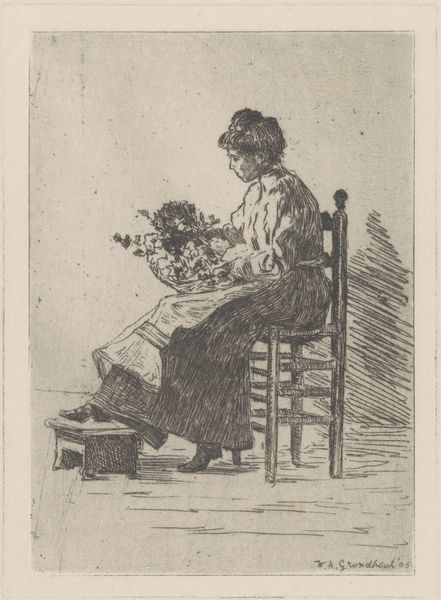
drawing, print, ink, engraving
#
portrait
#
drawing
# print
#
pen sketch
#
pencil sketch
#
ink
#
portrait drawing
#
genre-painting
#
engraving
#
realism
Dimensions: 115 mm (height) x 73 mm (width) (plademaal)
Editor: This is "Prøveplade: En spindende kone," or "Study Sheet: A Spinning Woman" by Frans Schwartz, from 1899. It looks like an ink drawing or maybe an engraving. The woman looks really focused. What historical context should we consider to understand this? Curator: Given that it’s from 1899, we should consider the rise of Realism in art and its connection to representing everyday life and labor. How do you think this image participates in, or maybe resists, those movements? Is this a glorification or something else? Editor: It doesn't seem romanticized; it feels quite ordinary. Is it possibly a comment on the social roles of women at that time, maybe their confinement to domestic tasks? Curator: Precisely. Consider the intended audience for prints like this. Were they primarily for wealthy patrons or a wider public? Who was consuming these images and how did that shape their meaning? Think about how prints circulated imagery and ideas. Editor: So, were these images used to reinforce the status quo or challenge it, or maybe both depending on the audience and how it was received? Curator: Exactly. Also consider how institutions like the museum itself affect how we interpret the piece. Its very presence here changes how we might understand it. Does being exhibited change how the art gains significance? Editor: Wow, I never considered the museum itself influencing meaning so actively. That really makes you think about who controls the narrative of art history. Curator: Right. Seeing art in this light highlights how power structures shape our perceptions of the past. This print might not seem overtly political, but considering the social forces around its creation and reception really enriches our understanding. Editor: I see. Thank you. This has shifted my perspective, viewing art as a product of historical and social factors.
Comments
No comments
Be the first to comment and join the conversation on the ultimate creative platform.
